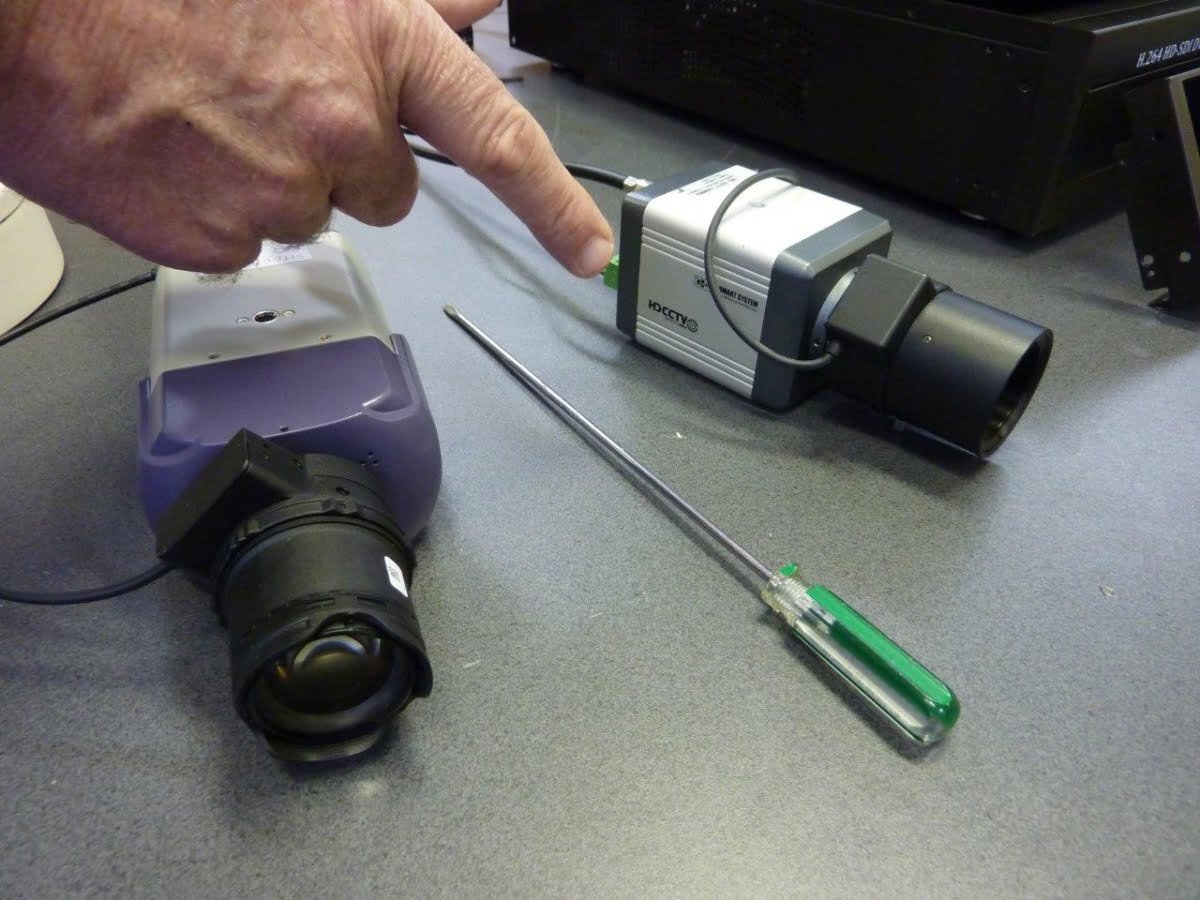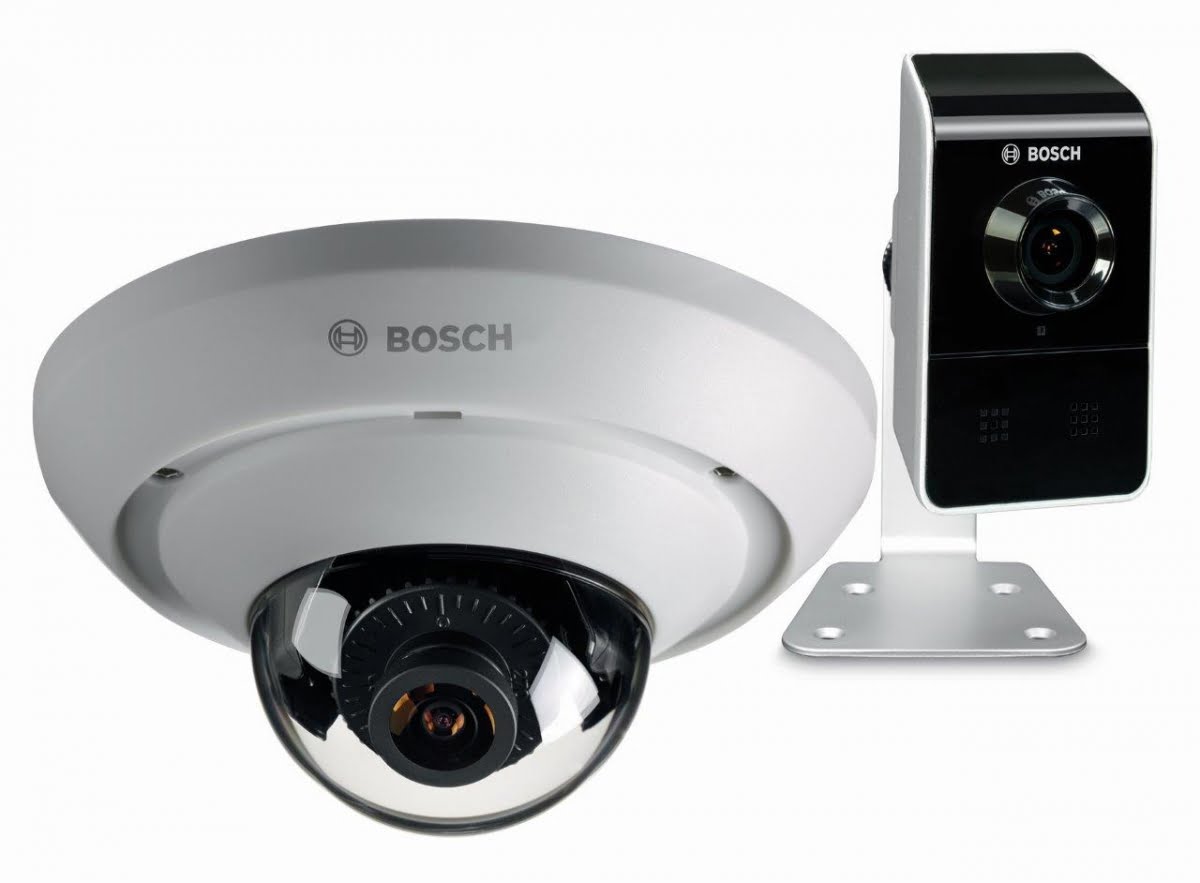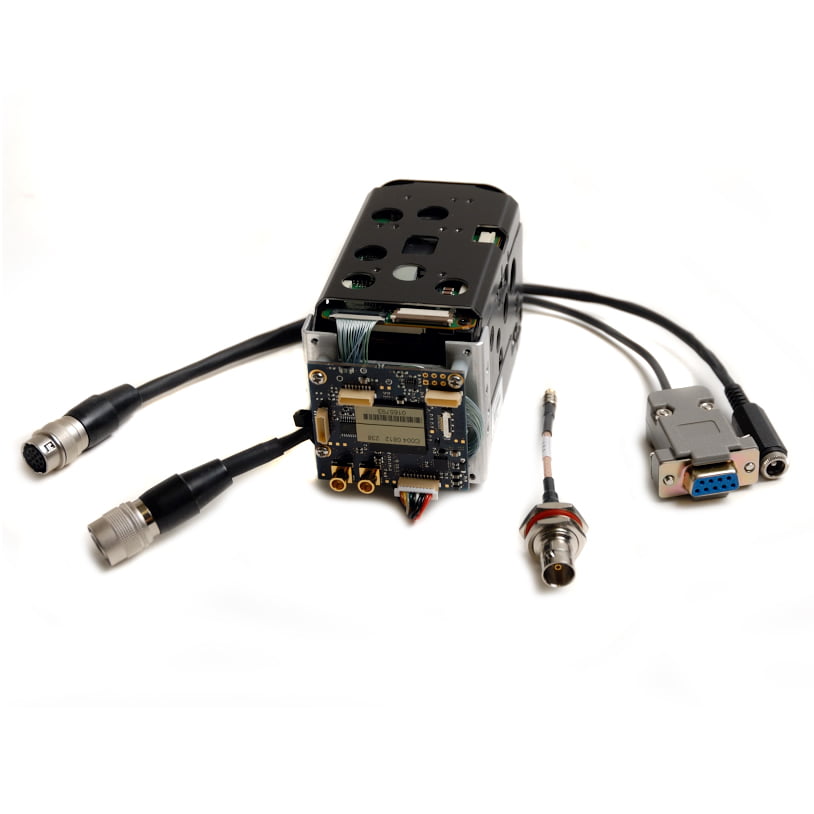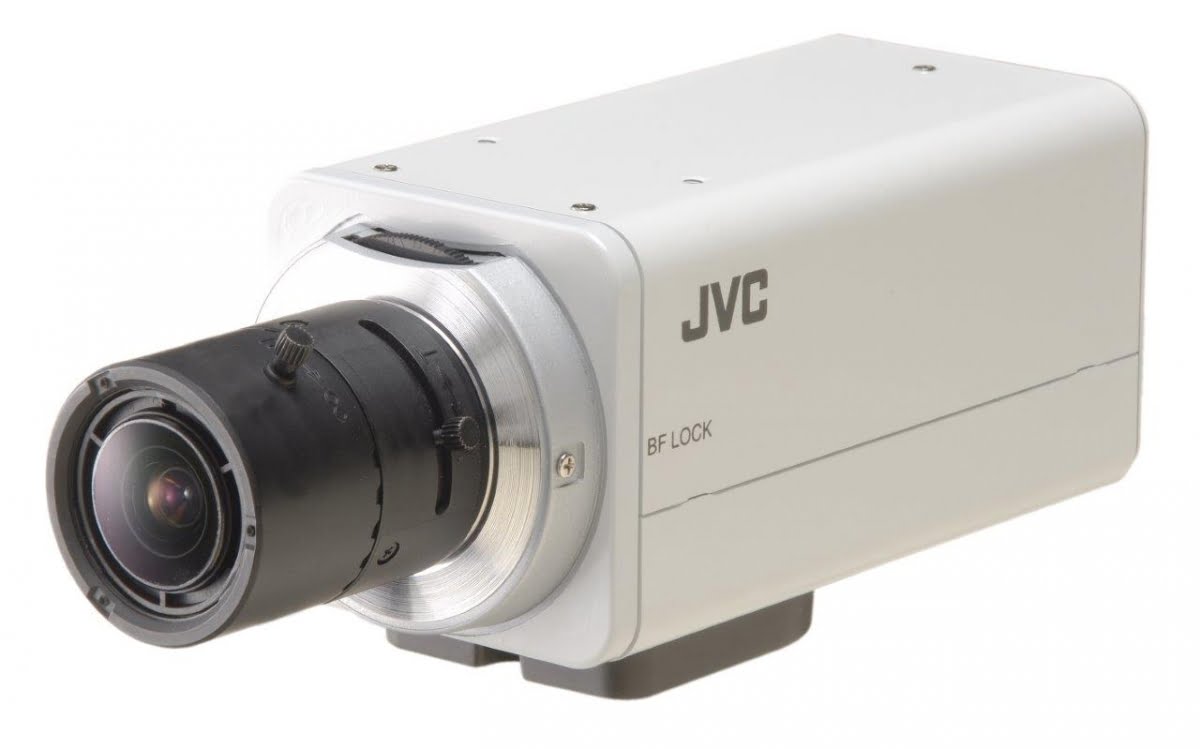Our world faces greater security threats than ever before and governments and commercial organisations are investing heavily in the security and safety of assets and personnel.
OFFERING a range of practical safety solutions that have proved indispensable to first responders and investigators, the video surveillance industry is in the midst of a period of enormous expansion. New products and new surveillance solutions with improved performances and reliabilities are continuously appearing on the market. But having so many options leads installers and integrators to another problem.
Because of rapid and ongoing technological development, there is a great deal of uncertainty among security engineers over which technology or product is best in the long term. Ultimately, the final selection should be based on the fact that the chosen security solution is supposed to offer the best performance and value for money to our customers.
The aim of this article is to describe and compare all available video surveillance technologies on the market, focusing on their weaknesses and strengths. Additionally, it gives my personal suggestions of what I consider to be the preferred choice of surveillance technology in various security scenarios and circumstances.
To begin with, there are 7 video surveillance (CCTV) technologies on the market: Analogue CCTV, Advanced Analogue CCTV, IP (Network), HD-SDI (High Definition Serial Digital Interface), AHD (Analogue High Definition), HD-CVI (High Definition Composite Video Interface) and HD-TVI (High Definition Transport Video Interface).

Analogue CCTV Technology
Let’s start with analogue CCTV technology, considering its strengths and weaknesses.
Strengths:
1. Analogue CCTV is a stable and well-established robust technology which is supported by all major CCTV manufacturers
2. Simple and easy to install, setup, operate and maintain
3. No compatibility issues among the cameras and DVRs
4. Video signal is transmitted directly from the camera to the DVR with no delay
5. There is 100 per cent guarantee for no loss of frames or any video recordings in general
6. Operators can observe live view of all connected cameras with no delay
7. Full frame rate of 25 frames per second recording with a full video resolution is easily achievable
8. Analogue CCD cameras demonstrate better performance in low light conditions, than megapixel CMOS cameras
9. Video transmission for up to 300m distance can be achieved with standard RG59 coax and no additional signal boosters
10. The total cost to build, setup as well as to maintain an analogue CCTV system, is very affordable – this is the most economical of CCTV technologies
11. There’s plenty of free software applications on the market such as Central Monitoring Systems, Remote Monitoring Control, Remote Management, etc.
Weaknesses:
1. Limited image resolution. Maximum recording resolution is D1 which is (704 pixels x 576 pixels, or about 0.4 MPix)
2. For a licence plate recognition 1 camera can cover only 1 traffic lane (about 4m wide scene)
3. There are not many sophisticated video applications and video integrations like video analytics on the market because of the limited picture resolution
4. The quality, reliability and security of its wireless transmission is inferior and less secure than other IP technologies
5. The upgrades of the camera’s firmware and other camera’s settings are much harder to implement.
Best applications for analogue CCTV solutions
1. Good for sites with limited or very poor light conditions especially during night time
2. Good for small scale CCTV installations with up to 16 cameras and 1 DVR
3. Good for domestic and small to medium commercial and industrial buildings where HD detailed video coverage is not a necessity
4. The best choice when a repair, modification or addition of new cameras to the existing analogue CCTV system is to be done
5. The most cost-effective choice when the new CCTV installation utilises the existing infrastructure of coax/fig-8 cables, inherited from the previous CCTV installation, providing the old cables are in good condition
6. Preferred option for a low budget and low maintenance CCTV installations.

Advanced Analogue CCTV Technology
This new technology is a sub-class of analogue CCTV. It has similar strengths and weaknesses as analogue CCTV with slight improvements in certain fields. In my opinion, it may only be an interim alternative to new and superior HD CCTV technology. Once HD CCTV gets the attention and the much needed support from the major developers and CCTV manufacturers in the world, it will eventually sort out its early teething problems and become a preferred choice for all low to medium sized CCTV installations.
The new Advanced CCTV trend became a reality when in the year 2014, a few major CCTV manufacturers launched new series of improved video resolution CCTV products. Among them was Bosch Security with its 960H line of CCTV products as well as Samsung Techwin with its Beyond series of 1000 TVL (1280H) products.
Samsung’s Beyond series is new line-up of analogue products from Samsung that provides the best possible analogue CCTV resolution, improved backlight compensation and user-friendly functions. The biggest achievement, however, is the improvement to the weakest characteristic of the analogue CCTV which is the low resolution of the video image.
Comparing to the old maximum analogue CCTV resolution of 600 TVL or even 700TVL, the new Beyond series cameras are capable of achieving a maximum horizontal resolution of 1305 pixels and a vertical resolution of 1049 pixels. Beyond series DVRs can record with maximum resolution of 1280 x 576 pixels (0.7 MPix) @ 25 frames per second, per channel.

IP (Network) Technology
Now let’s take a look at IP video technology, which covers cameras, storage solutions and software solutions supporting them.
Strengths:
1. This technology can achieve megapixel resolution of images which results in excellent clarity and crystal clear picture. Zooming in x2 or even x16 of a playback or live image will still provide useful and clear image
2. Wireless transmission of the IP camera signal is much more robust, resistant to interference and very secure
3. It is easy to remove, replace or add new cameras into the system
4. It is also easy to move or replace the NVR and the data storage devices
5. IP Technology allows a variety of data storage options including redundant storage, remote storage, etc.
6. Easy to maintain and upgrade the firmware and software of the IP cameras and other network devices
7. The same CAT5/6 network cable is shared for the video transmission, control data and power supply to the cameras. No other cables are required for the installation
8. A large range of video analytics and many other video applications and integrations are readily available on the market. These include licence plate recognition apps, traffic counter apps, face recognition apps, as well as integration with many compatible access control systems
9. Many network recording software apps are powered with intelligent search based on operator’s requirements as well as digital zoom with good quality
10. Some IP CCTV manufacturers offer their own SDK (software development kits) so the third party manufacturers and developers can design new video security applications with their products.
Weaknesses
1. IP camera performance under low light conditions is significantly inferior to its analogue counterparts
2. IP CCTV systems are more fragile than analogue ones, because they rely heavily on the network infrastructure. If the network goes down there will be no live video monitoring neither recording by the NVRs
3. Because of the packetised nature of the IP network data transmission there will be always a delay in the video signal. This delay can be in magnitudes of 10 or 20 seconds and is especially noticeable while viewing all cameras simultaneously in real time at higher resolutions
4. Installation of a large IP CCTV system requires lots of initial planning and extensive knowledge in computer networking as well as IP video. If not designed and specified properly, the system will suffer from latency, delays and missing frames. If that is the case, even simple operations like a simultaneous play back of 2 or more cameras will be very slow and frustrating for the security operator. Bear in mind that missing frames from a video stream mean missing frames from streams recorded on the NVR, so there is a probability that some important events may not be recorded at all. Our experience is that Murphy’s Law often proves applicable in cases like this because when the network was configured at the right level, we had quite a few instances of missed recordings from important events
5. There are a few compatibility limitations among the cameras, NVRs and CMS software that have to be sorted out when planning and deciding what IP CCTV equipment to use
6. There is a limitation of max 100m cable run between the network nodes
7. Larger systems require fast and robust network infrastructure which usually has to be built from scratch
8. Megapixel IP cameras require much more storage space than analogue CCTV cameras
9. Every IP camera has its own allocated data storage which is a different recording approach than the global, shared, storage used by the analogue systems. In order to optimise the IP CCTV system’s storage capacity it will require every individual IP camera to be monitored for its activities over certain time
10. Cost to build and setup the IP system is at least double than any other CCTV system and cost to maintain is triple or more
11. Many central management software – CMS vendors, on top of charging for their application software, ask for an additional licence fee for every IP camera used in the system.

IP video solutions are suitable for following types of installations:
1. IP surveillance should be considered for large sites comprising of more than 16 cameras
2. IP CCTV systems will be the preferred option if the site already has an existing high bandwidth network installed, especially if the cameras are going to be spread out over a wide area, or if wireless cameras are going to be used
3. CCTV installations with the emphasis of high definition HD footage with lots of details. Some examples may include big sporting venues, train stations, town squares, shopping centres, etc. In such cases one megapixel camera can replace many analogue cameras and that is a very cost effective solution.
4. Sites where the number one priority of the video surveillance system is the quality and clarity of the recorded image and the cost of installation and the maintenance are secondary.

HD-SDI (High Definition – Serial Digital Interface) Technology
Now we come to high definition serial digital interface technology, or HD-SDI, which is digital solution that uses the same cabling as analogue solutions, making it ideal for retrofits.
Strengths
1. High definition video that can go up to 2MP of resolution (1920 x 1080) pixels
2. Relatively easy to install, setup, operate and maintain. Similar to the analogue CCTV
3. HD-SDI is already accepted standard among the big CCTV manufacturers
4. No compatibility issues among the various SDI cameras and SDI DVRs
5. Video signal is transmitted directly from the camera to the DVR with no latency
6. There is 100 per cent guarantee of no loss of frames or any video recordings in general
7. Operators can observe live view of all connected cameras with no latency
8. Full frame rate of 25 frames per second recording with a full video resolution is easily achievable
9. SDI technology should use the same kind of cables as the analogue CCTV system but the catch is that they have to be in a good condition.
Weaknesses
1. Despite being a cheaper alternative to the IP CCTV systems, SDI equipment cost is still too high
2. Limitation of max 100m cable runs between the camera and the DVR
3. Video signal transmission is susceptible to electrical noise and electromagnetic Interference
4. Requires much more storage capacity than analogue CCTV
5. There’s not as much in the way of tools, applications and support available on the market as there is for IP or analogue CCTV systems
Suitable for following types of installations
1. Personally my suggestion is that if there is not a specific need or urge for installing HD-SDI CCTV system, than don’t install it at all. The reason is because there are much more sophisticated and cheaper HD Analogue CCTV alternatives that are rapidly coming on the market such as AHD, HD-CVI and HD-TVI video surveillance technologies.
HD Analogue CCTV Technologies (AHD, HD-CVI and HD-TVI)
All 3 HD Analogue technologies, which include Analogue High Definition (AHD), High Definition Composite Video Interface (HD-CVI) and High Definition Transport Video Interface (HD-TVI), have similar characteristics.
Strengths
1. The technology is very similar to analogue CCTV. All cameras are directly connected to the associated DVR
2. It utilises the same 75 Ohm coaxial cable as the analogue CCTV technology is using, but instead of transmitting only video it transmits simultaneously 3 signals together – video, audio and serial data
3. Transmitted signals are immune to external electromagnetic interferences
4. Maximum distance between camera and DVR is 500m
5. It achieves instant signal transmission with no compression, no latency and no delay
6. Delivers HD quality video image. Supports 720p (1280 x 720 pixels) and 1080p (1920 x 1080) pixels, that’s full HD
7. Complies with open standard which guarantees compatibility among the devices from different manufacturers with the same technology
8. Low ownership and maintenance cost. Almost the same cost as for the good old-fashioned.
Standard Definition Analogue CCTV
Let’s take a look as a comparison between AHD, TVI and CVI technologies.
Technology AHD TVI CVI
NTSC/PAL Support YES NO YES
D1-960H Compatibility YES NO YES
Video & Data Combined YES NO YES
Transmission (75 Ohm coax @720p) 500m 500m 500m
Audio Support YES YES YES
Analogue Matrix Support YES NO NO
Video Distributor Support YES NO NO
Open Platform Design YES YES NO
DVRs support 720P and 1080P YES YES NO
* AHD, TVI and CVI HD all offer resolutions of 720P @ 25/30 FPS, 720P @ 50/60 FPS and 1080P @ 25/30 FPS.
Weaknesses
1. Relatively new technology and still not widely accepted by the major CCTV manufacturers
2. The technology is not supported enough with as many software applications as analogue CCTV and IP technologies are
3. Integration with complex integrated access control/intrusion systems is very limited because of the lack of support from the major developers and manufacturers
4. Maximum video resolution can only go to Full HD (1920 x 1080 pixels)
5. The video image under low light conditions is still not as good as conventional analogue CCD cameras because the image sensor technology is CMOS rather than CCD.
Suitable for following types of installations
1. In general all new small to medium scale CCTV installations in a future, should be done with the best one of the 3 HD analogue solutions which is the AHD technology
2. Good for small scale CCTV installations with up to 16 x cameras and 1 DVR
3. Good for domestic and also for small to medium commercial and industrial buildings
4. The most economical choice in cases where the new installation is going to utilise the existing network of coax/fig 8 cables, inherited from the previous CCTV installation
5. Preferred option for a low budget and low maintenance CCTV installations.♦
By Georgi Ristov











